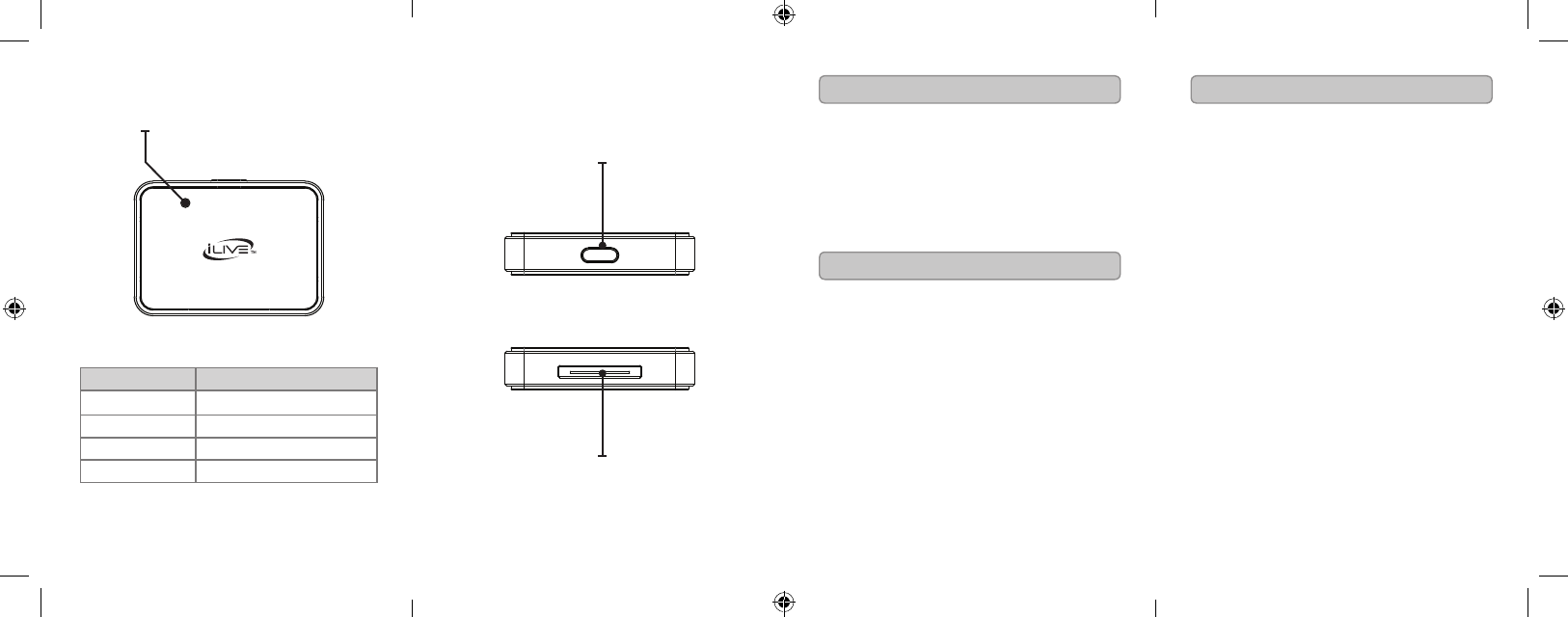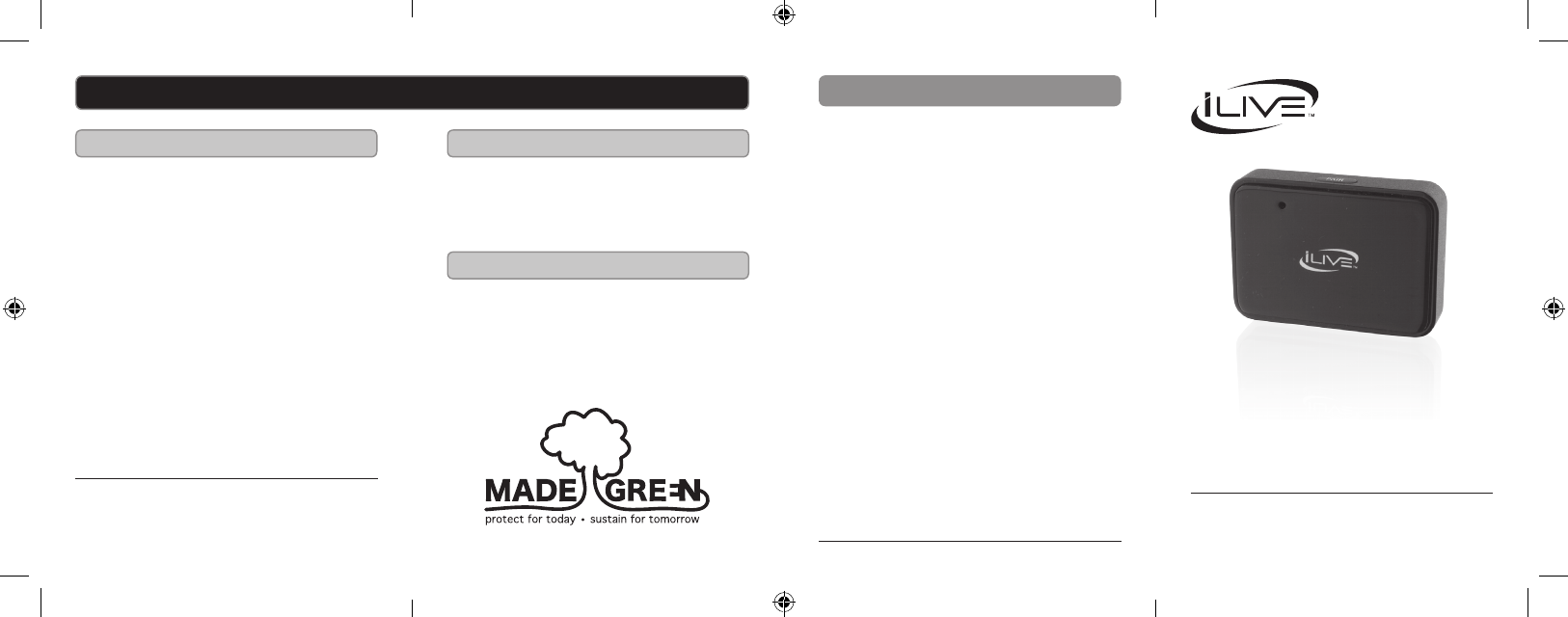Junlan Electronic CAB2437 Bluetooth Receiver User Manual
Shenzhen Junlan Electronic Ltd Bluetooth Receiver
User manual

PAIR
Pair /Power
Indicator
Power/Pair Button
Dock
Connector
1. Once connected for the rst time, the
unit should turn on automatically.
If the unit does not power on, press
and hold the Pair button for 3+
seconds to power the unit on.
The Pair /Power Indicator
will ash slowly.
A beep will sound when the
unit has been recognized.
2. Repeat step one to power the unit o.
The Pair /Power Indicator will turn o.
1. Set your iPod audio device
to iPod mode.
Refer to the user’s manual for your
specic device for instructions.
2. Connect the IAB53 using
the Dock Connector.
Power
PairingConnecting
1. Once the unit has been recognized,
the Pair /Power Indicator will
ash slowly when searching, then
quickly to enter pairing mode.
If the unit does not enter pair
mode automatically, press the
power/Pair button once.
2. Using the native controls
on your Bluetooth device,
select the “IAB53” to pair.
If your device requests a password,
enter the default password “ 0 0 0 0 ”.
Refer to the user’s manual for your
specic device for instructions on pairing
and connecting Bluetooth devices.
3. Press and Hold the Power/Pair button
to turn o and disconnect the IAB53.
Status Indicator
Power O No light
Searching Slow ashing light
Pairing Quickly ashing light
Connected Solid light
IAB53-771-01-IB.indd 1-4 11/7/2012 10:42:45 AM

USER’S GUIDE
V:771-01
For the most up-to-date version of this User’s
Guide, go to www.iLiveElectronics.com
IAB53
Wireless Bluetooth
Receiver and Adapter
Copyright © 2013 Digital Products International (DPI, Inc.) |
All other trademarks appearing herein are the property of their
respective owners. Specications are subject to change without
notice
To download this User’s Guide in English,
Spanish, or French, or to get answers to
frequently asked questions, visit the support
section at www.iLiveElectronics.com.
Para descargar este Manual del Usuario en
inglés, español y francés, o para obtener respu-
estas a preguntas frecuentes, visite la sección
de apoyo en www.iLiveElectronics.com.
Pour télécharger ce guide de l’utilisateur en
anglais, espagnol ou français, ou pour obtenir
des réponses à des questions fréquemment
posées, consultez la rubrique d’assistance sur
www.iLiveElectronics.com.
International Support
Email Support: prodinfo@dpiinc.com
Email Parts: partsinfo@dpiinc.com
Phone Support: 1-888-999-4215
Website: www.iLiveElectronics.com
Company Information
Contact Information
For Warranty Information and the most up-to-
date version of this User’s Guide, go to
www.iLiveElectronics.com.
Warranty
Warnings
Warning: Changes or modications to this unit not expressly approved by the
party responsible for compliance could void the user’s authority to operate the
equipment.
nOTE: This equipment has been tested and found to comply with the limits
for a Class B digital device, pursuant to Part 15 of the FCC Rules. These limits
are designed to provide reasonable protection against harmful interference in
a residential installation. This equipment generates, uses, and can radiate radio
frequency energy and, if not installed and used in accordance with the instructions,
may cause harmful interference to radio communications. However, there is
no guarantee that interference will not occur in a particular installation. If this
equipment does cause harmful interference to radio or television reception, which
can be determined by turning the equipment off and on, the user is encouraged to
try to correct the interference by one or more of the following measures:
• Reorient or relocate the receiving antenna.
• Increase the separation between the equipment and receiver.
• Connect the equipment into an outlet on a circuit different from that to which
the receiver is connected.
• Consult the dealer or an experienced radio/TV technician for help.
IAB53-771-01-IB.indd 5-8 11/7/2012 10:42:47 AM
This device complies with part 15 of the FCC Rules. Operation is subject to the
following two conditions: (1) This device may not cause harmful interference,
and (2) this device must accept any interference received, including interference
that may cause undesired operation.